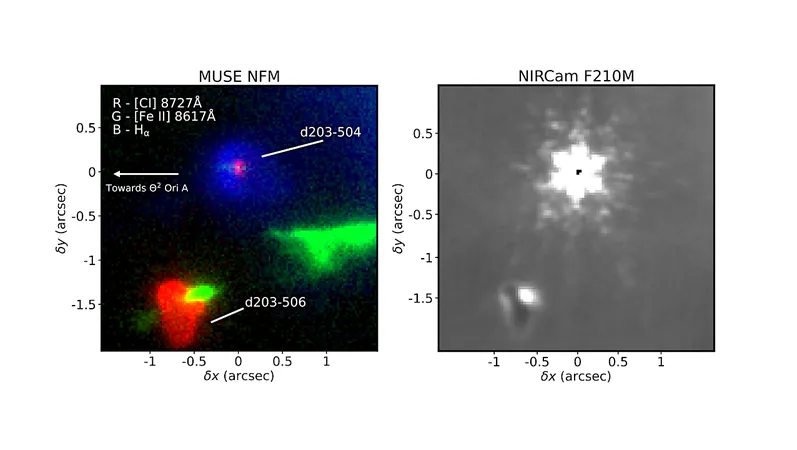
Unveiling the Secrets of Planetary Formation in High-Radiation Environments
2025-06-01
Author: Nur
Revolutionary Discoveries in Exoplanet Chemistry
Recent observations from the James Webb Space Telescope (JWST) have dramatically transformed our understanding of how the chemical makeup of exoplanets is shaped by the surrounding disks of gas and dust.
While we've seen a plethora of species within these disks, the impact of overwhelming ultraviolet (UV) radiation from massive stars on young stellar clusters—where many planetary systems, including ours, are born—remained largely unexplored.
A Glimpse into the Orion Nebula
In an exciting breakthrough, researchers have turned their attention to d203-504, a nascent star located in the Orion Nebula, nestled within a 30 AU disk bathed in the light of nearby massive stars. This environment offers a unique opportunity to observe how the interplay of UV radiation influences the chemistry of these young disks.
The study reveals a cornucopia of molecular signatures, including carbon monoxide (CO), water (H2O), and the intriguing molecule CH3+, alongside polycyclic aromatic hydrocarbons (PAHs). Notably, water and CO were detected in absorption within the inner regions of the disk. The gas-phase carbon-to-oxygen (C/O) ratio was estimated at 0.48, aligning closely with solar values and those observed in the Orion Nebula.
Shields Up: Chemical Protection in Action
A striking contrast emerges in the outer layers of the disk, where CH3+ and PAHs reside. Here, the effects of UV radiation can be felt much more acutely. This suggests that while the inner disk is effectively shielded from harsh UV rays, the surface layers undergo UV-induced chemical reactions that could deplete their carbon content significantly.
These findings challenge previous notions about the chemistry of protoplanetary disks and underscore the delicate balance between radiation and molecular formation that shapes the birth of planetary systems.




 Brasil (PT)
Brasil (PT)
 Canada (EN)
Canada (EN)
 Chile (ES)
Chile (ES)
 Česko (CS)
Česko (CS)
 대한민국 (KO)
대한민국 (KO)
 España (ES)
España (ES)
 France (FR)
France (FR)
 Hong Kong (EN)
Hong Kong (EN)
 Italia (IT)
Italia (IT)
 日本 (JA)
日本 (JA)
 Magyarország (HU)
Magyarország (HU)
 Norge (NO)
Norge (NO)
 Polska (PL)
Polska (PL)
 Schweiz (DE)
Schweiz (DE)
 Singapore (EN)
Singapore (EN)
 Sverige (SV)
Sverige (SV)
 Suomi (FI)
Suomi (FI)
 Türkiye (TR)
Türkiye (TR)
 الإمارات العربية المتحدة (AR)
الإمارات العربية المتحدة (AR)